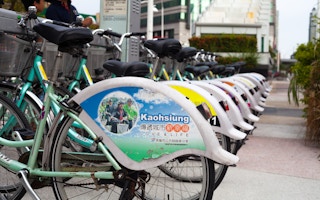Cycling is perhaps the ideal way to travel through a city if you cover distances under five kilometers. This is also true for Asian cities such as Metro Manila, which a new law proposal aims to make a bike-friendly space like Amsterdam or Copenhagen.
Riding a bicycle offers a lot of benefits. The cardiovascular exercise is healthy, bikes are cost-effective as they are a one-time purchase with minimal maintenance, and you don’t need a parking spot or a garage at home to store it. But despite these advantages, several factors prevent urban residents in developing Asia from fully embracing cycling as a mainstream means of transport.
Even major cities that used to be dominated by bikes like Shanghai in the People’s Republic of China or Ha Noi in Viet Nam now face serious traffic congestion and declining air quality due to increasing motorbike and car usage.
ADB data shows how cycling generates practically zero CO2 emissions, while each a passenger in a fully occupied private car can travel 31,100 km on diesel fuel, or 26,200 km on gas to consume 1 ton of CO2.
European countries such as Denmark and the Netherlands have been able to continuously promote cycling as the top means of transportation in cities. According to a study by the European Commission, about 40% of Dutch commuters use by bike, and the bike ownership ratio in the country is almost 1/1.
If we compare cities in the Netherlands with the Philippines, one reason that cycling is not as popular in Metro Manila as it is in, say, Rotterdam is topography. The Netherlands has a generally flat to gently sloping terrain, which means you don’t require as much endurance to cover five to10 km distances.
The terrain in Metro Manila, on the other hand, is more varied and there are some quite steep hills. Another issue is weather. The Netherlands has a temperate climate, and even during the summer months the temperature averages 20-22°C. Metro Manila’s year-round temperature ranges between 26°C to 32°C, and combined with the high humidity one has to literally sweat it out to cover a five km distance by bike.
Infrastructure is the most critical success factor. Bike lanes in the Netherlands run parallel to city streets and highways with their own traffic signals and signs that are harmonized with signals for roads, trams, and yes, even pedestrians. You don’t need to worry about accidents as long as you follow the signals.
Moreover, parking spaces for bikes also abound and can be found at almost every corner of every street as well as residential buildings, offices, schools, supermarkets, and public spaces. In short, cycling is a part of architectural design, unlike in in Metro Manila where roads and highways were generally designed and built to accommodate only cars, so putting in bike lanes implies slicing through the existing roads and sidewalks.
“
Even major cities that used to be dominated by bikes like Shanghai in the People’s Republic of China or Ha Noi in Viet Nam now face serious traffic congestion and declining air quality due to increasing motorbike and car usage.
It’s also hard to imagine how the Philippine capital’s future bike infrastructure will offer inter-connectivity with other modes of transport, and bike lines that extend into private neighborhoods so you can cycle directly to any destination directly from your doorstep. Finally, cycling in the Netherlands is also about enforcement of traffic rules, and violations come with a hefty price.
In the Philippines, new proposed legislation (House Bill 263) hopes to integrate cycling into the country’s transport system with provisions such as developing bike lines, building bike infrastructure like park racks in both public and private buildings, and observing a national car-free day.
This proposed law can do much to improve sustainable transport, but for implementation to be successful we need strong buy-in from all stakeholders: government departments, city mayors, private businesses and of course potential end-users like students and workers, not just cycling buffs.
For cycling to really take off in Metro Manila like in Rotterdam, we must address several constraints. First, cities must integrate bike lanes into their existing network, like Marikina for instance has one.
Second, we must come up a feasible and affordable engineering solution to deal with Metro Manila’s topography, and tire traction during the rainy season.
Third, owners of office buildings must commit to pay for bike parking areas and other facilities for cyclists. Lastly, we must change the popular mindset to see bike lines for exclusive use of cyclists, and obey traffic rules.
Aldrin Plaza is urban development officer, Sustainable Development and Climate Change Department, Asian Development Bank. This post is repubished from the ADB Blog.


















